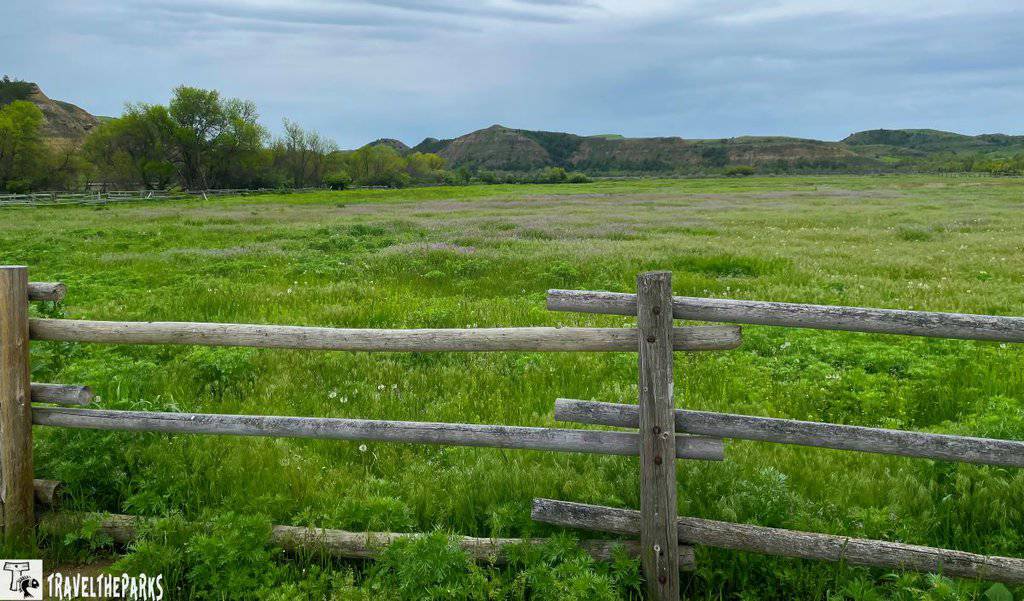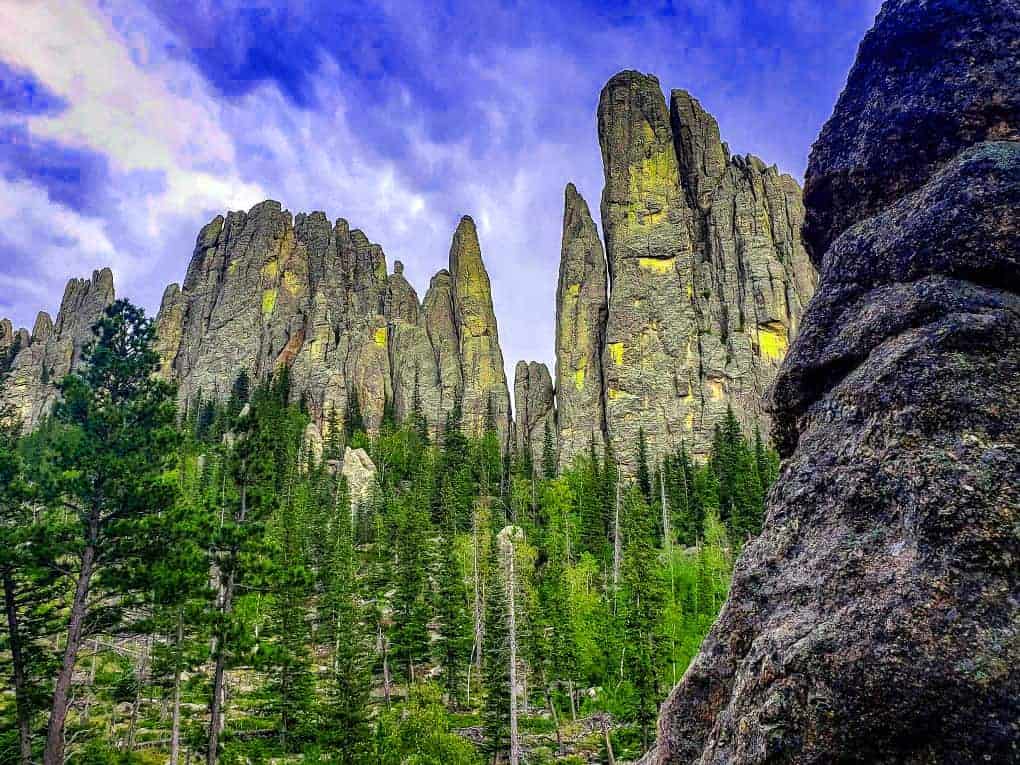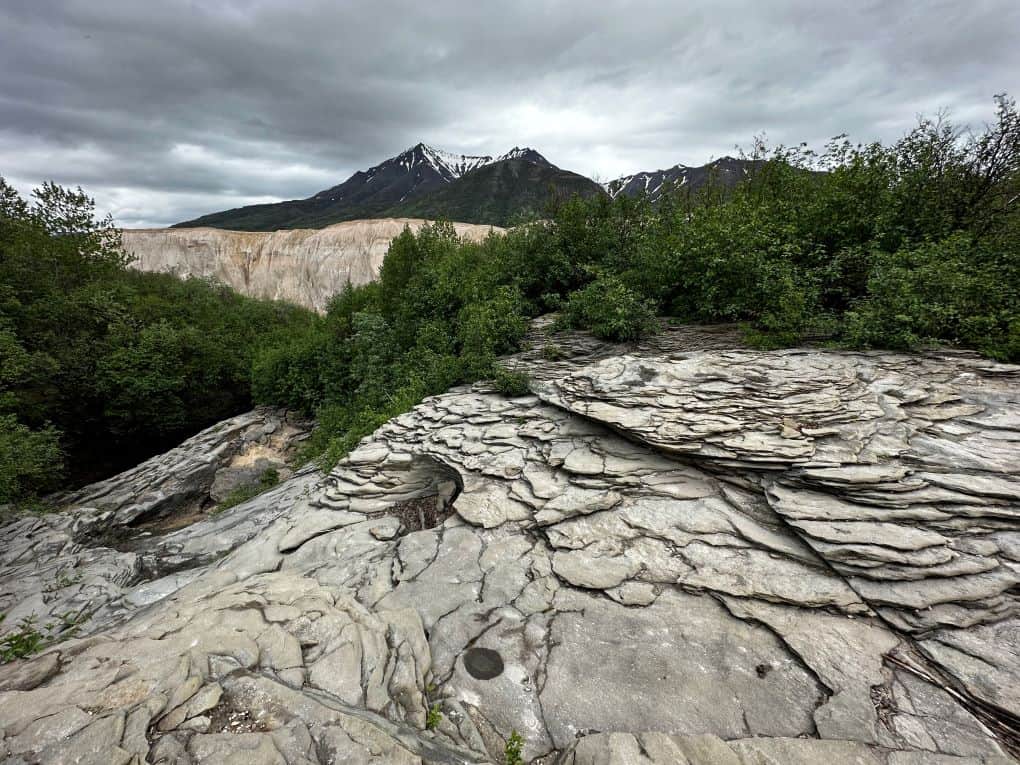The Midwest region of the United States is home to a wealth of natural wonders. We enjoyed exploring the hidden gems of these Midwest national parks. Discover the best treasures waiting to be uncovered in this great region. In the heartland of America, the intrepid explorers may find miles of pristine shoreline with hidden beaches. Or the opportunity to hike through sweeping prairies blanketed in vibrant wildflowers. Sometimes it is hearing the thundering power of cascading waterfalls that captures our attention. These are just a few of our explorations on our Midwestern national parks road-trip.
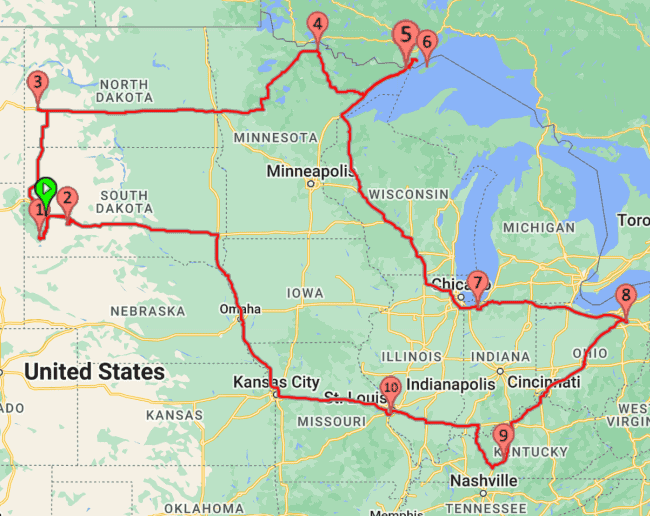
This post may contain affiliate links, meaning if you purchase something through one of these links, we may earn a small commission at no extra cost to you! Read the full disclosure policy here.

Table of Contents
Midwest National Parks Spotlight: Wind Cave’s Underground Beauty
Overview: The immense Black Hills of southwestern South Dakota provide a scenic backdrop for unique below-and-above-ground Wind Cave National Park. Above the ground, one can view mixed-grass prairie with a mix of ponderosa pine forests and rugged rolling hills. Un What lies beneath the ground is an interestingly intricate yet complex cave system. This cave system has formed within the porous limestone. Over millions of years, the processes of dissolution and deposition have carved this labyrinth of tunnels.
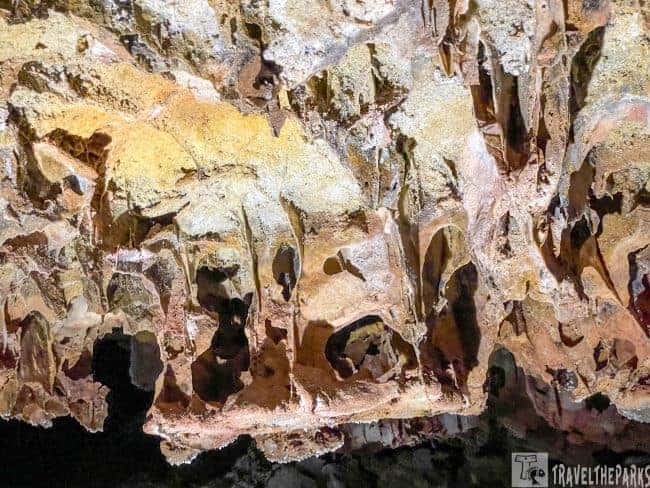
Best Things to Do: A cave tour is a must-do when visiting this park. Famous for its boxwork formations, which are—thin calcite fins,our is ideal for visitors seeking a leisurely pace and ample time to admire the pristine cave features.

Hiking trails lead you away from the road into the heart of the park. With over 30 miles of hiking trails, it’s the best way to truly experience the park. Bison, pronghorn and prairie dogs are among the species you will cross paths with during your time here. Outdoor enthusiasts can also fish, horseback ride or bike in the park.
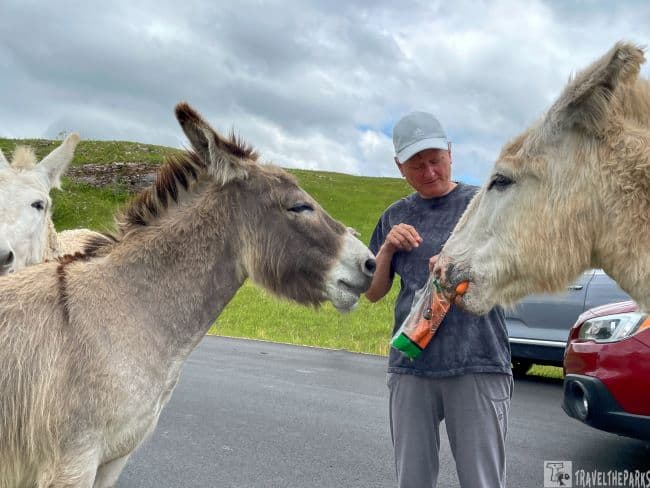
Our Favorite Memory of Wind Cave National Park
While not technically in the park, my favorite memory has to be feeding the “begging burros” in Custer State Park. Approaching the park entrance, we suddenly came upon a herd of these adorable, shaggy-haired donkeys. Quickly pulling over and grabbing our bag of carrots, we couldn’t resist feeding them. Holding out our open palms, I loved watching as their velvety muzzles delicately plucked the treats from our hands. This is a memory that always brings a smile to our faces whenever we reminisce about our wonderful road-trip.
NOTE: Please be aware that the park does not allow feeding of its wildlife. I do not feed wildlife anywhere else. However, the park does not classify the burros as wildlife because they are descendants of a herd that was used for trail rides in the early 1900s. Park rangers do not discourage the practice as everyone feeds them and has for generations.
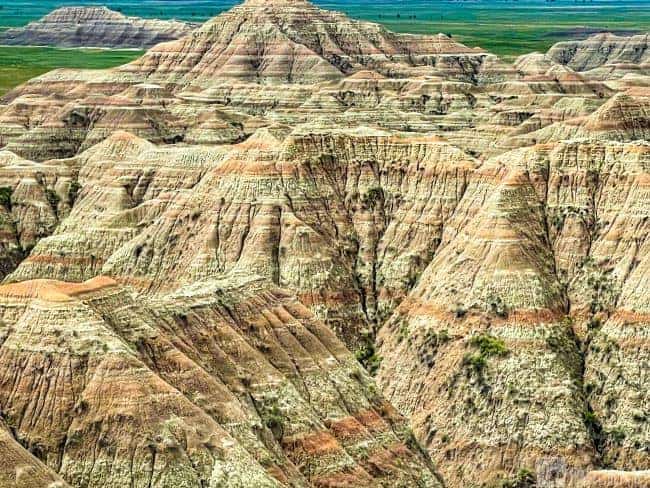
Badlands National Park: Discovering this Midwest Geological Treasure
Overview: Badlands National Park in South Dakota is a surreal expanse of jagged rock formations, with deep canyons waiting to be explored. Renown for its paleontological significance, kids will love exploring the Fossil Exhibit Trail. Through the interactive panels, they will learn about the ancient creatures that once roamed this area. It is important to remember that the Lakota people have ancestral connections to the park and consider it a sacred landscape.

Must-See and Must-Do Experiences in Badlands National Park
This park has an extensive trail system. Trails range from easy, family-friendly walks to challenging treks that lead deep into the heart of the park. Along the way, you may spot the iconic bighorn sheep clinging to steep cliffs or pass a prairie dog town. You must do the park’s scenic Badlands Loop Road, adding a side trip down Sage Creek Rim Road. There are countless viewpoints for you to appreciate that are awe-inspiring. Most you can either enjoy from the comfort of your vehicle, but we found it best to get out and see it all.
Note: There is little to no shade available on most trails. You will need sunscreen and a hat.. When hiking in the summer heat, you’ll become dehydrated quickly. Plan to drink about two quarts of water per hour during your hike. Bring binoculars to observe the animals in the park. Wear sturdy hiking boots with good traction and ankle support. Start your national park adventure by downloading the free NPS App from the App Store or Google Play.

Our Favorite Midwest Memory on the Notch Trail in Badlands National Park
What I found most sensational were the vibrant bands of exposed sediment along the Notch Trail. These layers tell the story of millions of years of geological history and, for me, are the park’s most striking feature. As I climbed to the top of the rope ladder, the colors grew even more dramatic. Pastel-hued rocks stretched endlessly across the cliffs, with bands of brilliant gold giving way to fiery oranges, which then blended into veins of deep burgundy and plum. The colors seemed to shift and shimmer with the changing light throughout the day, creating an ever-changing masterpiece carved by time.

Wildlife and Wilderness at Theodore Roosevelt National Park
Overview: Theodore Roosevelt National Park is indeed one of the most underrated gems in the National Park system. The raw beauty of the North Dakota Badlands just blew me away. Spread out over three distinct units, the park encompasses more than 70,000 acres of untamed wilderness. The South Unit near Medora is the most popular and therefore the most crowded. Exploring the Elkhorn Ranch Unit allows you to walk in Roosevelt’s footsteps and see where his homestead once stood. The least crowded and by far our favorite was the North unit near Watson. You must visit each to truly appreciate this park. Theodore Roosevelt National Park is sure to leave a lasting impression.

Best things to do at Theodore Roosevelt National Park
In the South Unit, the scenic drive is an absolute must. Many of the overlooks are paired with relatively short hikes, making it easy to pause and admire the herds of bison, bighorn sheep, and wild horses that roam freely across this untamed landscape.
The North Unit offers a stark contrast. More remote and rugged, the Little Missouri River winds through the park, carving dramatic rock formations as wind and rain continue to shape the landscape. This area is a paradise for photographers, offering opportunities to capture breathtaking scenery, abundant wildlife, and extraordinary geological features. Highlights include the striking cannonball concretions and the layered caprock — truly magnificent sights that reveal the park’s dynamic natural history.

Our Favorite Midwest Memory in Theodore Roosevelt National Park
Theodore Roosevelt National Park unexpectedly stole my heart. In the North unit, as we carefully made our way down the trail, we encountered bighorn sheep. The sight of the majestic creatures in the rugged landscape filled me with awe. My heart raced with excitement as the two rams gracefully navigated the cliffs. Time seemed to slow. It was a moment of pure wonder that I will cherish forever.
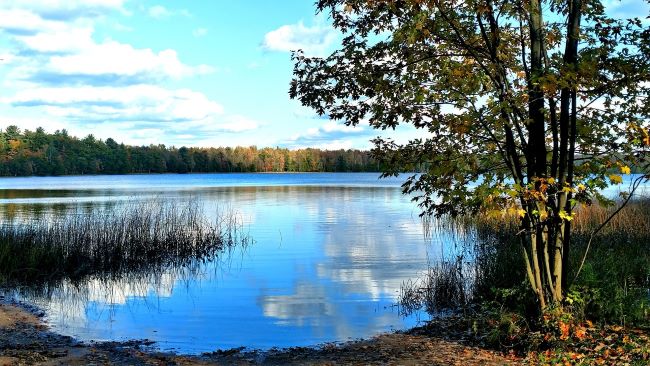
Isle Royale National Park: A Midwest National Park Treasure for Adventure Seekers
Overview: Isle Royale National Park is one of the least visited national parks in the United States, and getting there is a part of the adventure. Accessible by ferry (a 3–6 hour journey) or a seaplane (45–60 minutes), the island’s remote location makes it feel like a true wilderness escape. Most visitors explore the park on day trips, but to truly experience the magic of Isle Royale, a backcountry stay is essential. The park is largely undeveloped, which means you’ll need to carry all your camping gear with you. For those seeking solitude and rugged beauty, this is about as far off the beaten path as you can get.
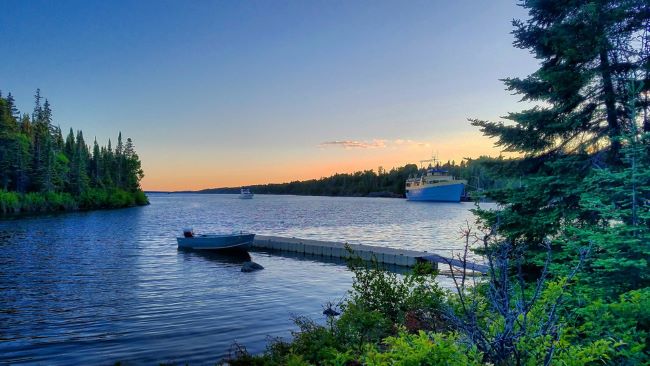
Note: the mosquitoes here are ferocious. Bring bug spray and a bug cover for your head and hands.
Best things to do: Visiting Isle Royale requires a bit of planning. Most visitors arrive via Windigo or Rock Harbor, each serving as a jumping-off point with limited facilities. Both locations offer a visitor center, camp store, lodge or housekeeping cabins, a restaurant (the Greenstone Grill), and a gift shop. At the marinas, you’ll find kayak and canoe rentals, and water taxis provide transport to other island drop-off points. A true hiker’s paradise, Isle Royale boasts over 165 miles of natural trails, where solitude is almost guaranteed — you may go the entire day without encountering another person on the path.
Our Favorite Memory: Finding Hidden Gems in Isle Royale National Park
Before leaving Rock Harbor, we took a boat sightseeing tour on the MV Sandy around Scoville and Blake Points to see the sunset. At this park, I have to say the sunrises and sunsets are incredible. Early in the morning, a short hike to Tobin Harbor. It was so calming watching the waves gently lapping on the rocks, listening to the echo of the loons. I know most would say that seeing a moose is what the island is renowned for (wolves too). But I have seen many moose on our Alaska travels. Loons have always been special to me. Their lonesome calls always evoke a sense of peace and solitude for me.
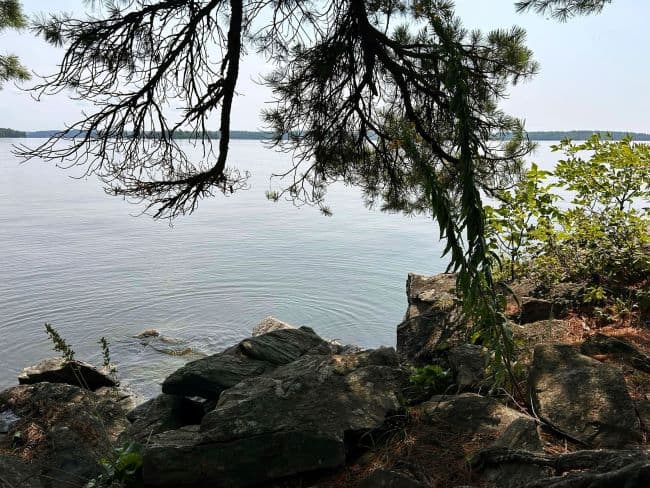
Plan Your Road Trip Adventure to Voyageurs National Park
Overview: if you ever find yourself in Minnesota, be sure to visit Voyageurs National Park. Filled with amazing crystal-clear waters and boreal forests, this incredible park covers a whopping 218,000 acres. This park is a treasure trove of adventure waiting to be explored. It’s a place to truly unplug with its breathtaking landscapes filled with natural beauty. It’s a haven for many animals, like moose, bears, wolves and bald eagles. The park’s rich history and cultural heritage add an extra layer of intrigue to your visit, making it a truly unforgettable experience for all who venture there. Don’t miss the chance to experience the wonder of nature at Voyageurs National Park.
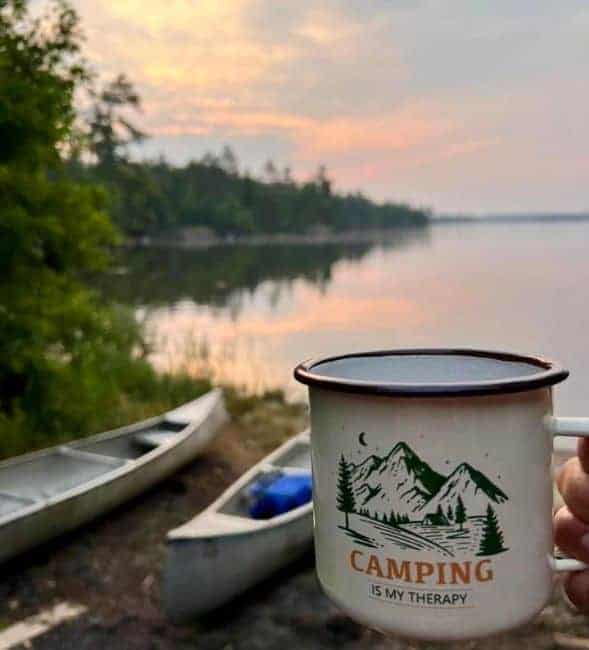
Best Things to Do in Voyageurs National Park
Voyageurs National Park is an outstanding spot for a fun adventure. You can check out the interconnected lakes like Rainy Lake, Kabetogama Lake, Namakan Lake, and Sand Point Lake. Renting a boat or taking a guided boat tour lets you explore more of these waters. The only way to truly experience this park is to get out onto these remote boundary waters. Looking for something more personal? Try gliding across the water’s surface via canoe or kayak to find a secluded island. It’s the perfect way to get close to wildlife, like moose, black bears, bald eagles, and even gray wolves.

If you really want to dive into Voyageurs National Park, hitting the trails is the way to go. Besides the beautiful lakes, there’s an entire network of trails that cater to every level of hiker. Don’t forget to swing by the Rainy Lake Visitor Center or the Kabetogama Visitor Center to get the scoop on the park’s natural wonders and cultural background.
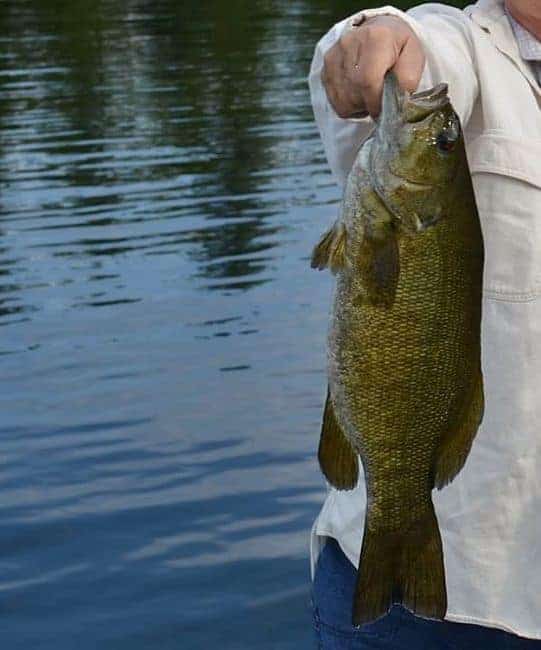
Our favorite Memory: Voyageurs National Park
One of the best memories we have from Voyageurs National Park was when we went fishing for smallmouth bass. We woke up early in the morning, grabbed our fishing gear, and headed out to the lake. The sun was shining, and the water was calm. In the distance, we could hear the lonely call of a loon. We dropped our lines and within minutes; we were reeling in one bass after the other. When it comes to smallmouth bass, anglers know that these fish have a feisty nature and a fighting spirit.
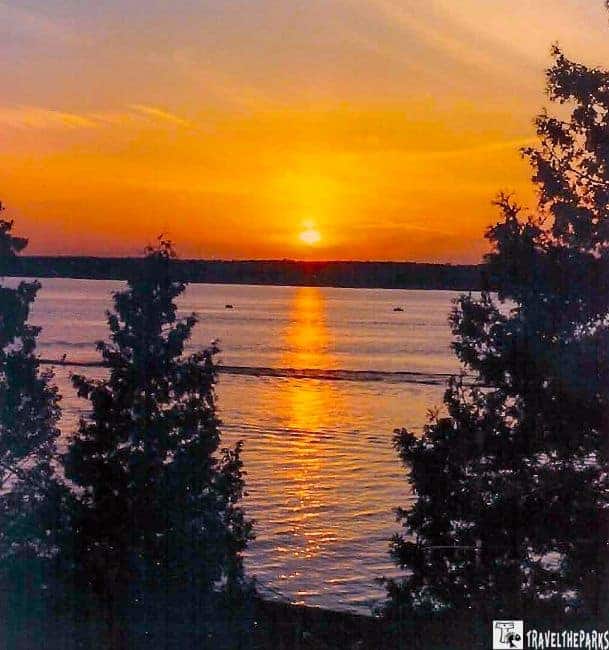
What an incredible day of fishing! We created countless unforgettable stories that we’ll cherish forever. As the day drew to a close, we returned to the lake house just as the sun began its descent. The sunset over the glistening lake provided us with a breathtaking view from the comfort of our dock – the perfect end to our idyllic day.
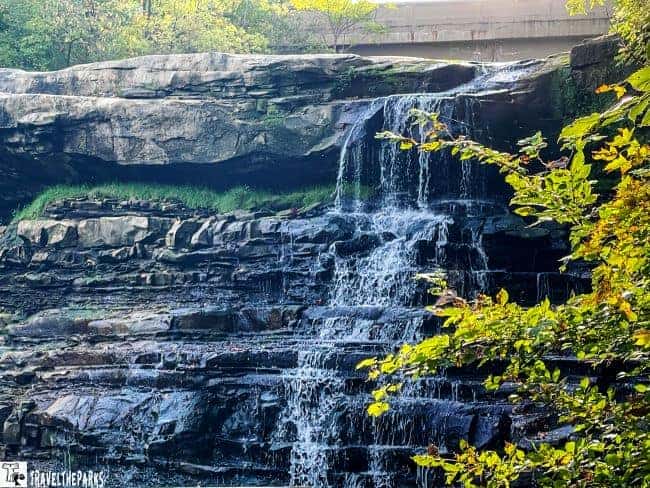
Escape to Cuyahoga Valley National Park: The Midwest’s Urban Nature Retreat
Overview: Cuyahoga Valley National Park is like a hidden gem nestled between the bustling cities of Cleveland and Akron. This park traces the winding path of the picturesque Cuyahoga River. The park’s stunning natural beauty offers a perfect escape for those seeking thrilling adventures or simply a peaceful retreat. Cuyahoga Valley is not just a park but also an ecological triumph showcasing how nature can thrive in an urban setting. The Cuyahoga River represents an ongoing commitment to restore and protect the waterways of America. With its diverse landscapes and abundant wildlife, this park is a must-visit destination for anyone looking to connect with the great outdoors.
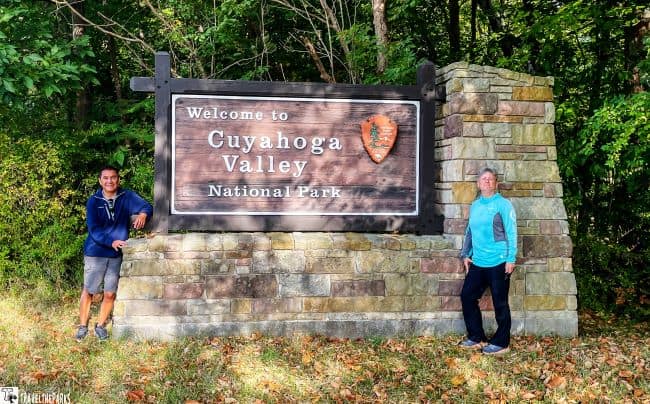
Best things to Do In Cuyahoga Valley National Park
Cuyahoga Valley National Park has many fun things to do! You can take a hike on one of the lovely winding Cuyahoga River trails or the more popular Ledges Trail or the Brandywine Gorge Trail. The 20-mile Ohio and Erie Canal Towpath Trail is a restored section of the canal’s historic towpath, which actually spans over 100 miles. One of the most popular activities here is biking along this historic trail. Another favorite is a ride on the train for the National Park Scenic excursion. Hopping on the train is a relaxing ride through this beautiful valley.

If you want to learn more about the Canal Era, you can visit the Canal Exploration Center (open seasonally). If you’re feeling adventurous, you can even go kayaking following the Cuyahoga River Water Trail. Don’t forget to stop by the Boston Mill Visitor Center to learn more about the park’s history and wildlife.
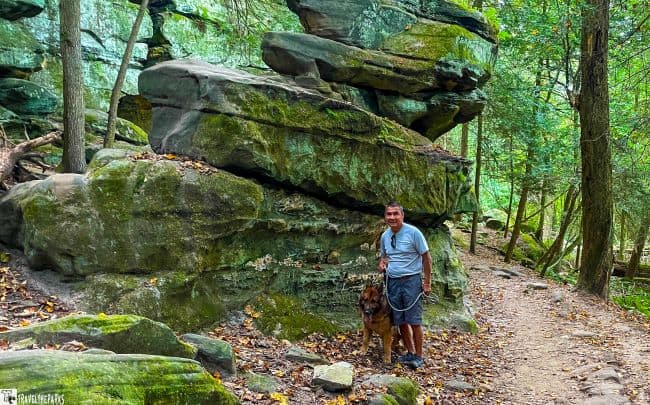
Our Favorite Memory: Cuyahoga Valley Scenic Railroad
If you’re looking for a fun adventure, you have to check out the Cuyahoga Valley Scenic Railroad! There are different excursions, but the one we loved was the “Murder Mystery.” For two hours we stepped into the shoes of a detective, gathering clues, questioning suspects, and unraveling an exciting crime all on board the train. Featuring talented actors, the series has a fresh storyline for each journey. Every participant plays a crucial role in this 2 hour adventure. What I loved best was meeting new people as we collaborated to vet the clues and solve “The Case of the Spooky Seance.” We won’t say who did it. This is a do not miss exceptional experience!

Indiana Dunes National Park: A True Midwestern Hidden Gem
Overview: At Indiana Dunes National Park, you can walk along the pristine shores of Lake Michigan, climb the dunes or simply sit on the beach and watch the world go by. The 15,000-acre park features sandy beaches, shifting dunes, and oak savanna forests. This picturesque park makes for an ideal family outing or solo adventure. The visitor center is the best place to start your exploration of the park. Be sure to watch the park film in the theater first. It will give you a brief history of the park and a great overview of the trails and what to see.

Things to Do in Indiana Dunes National Park
The park is very dog-friendly, welcoming canine companions on most trails and beaches. Hikers have more than 50 miles of trails to explore, ranging from easy strolls to more challenging treks. A favorite is the Dune Succession Trail, mostly a boardwalk with a few steps, offering scenic views of Lake Michigan and ending at West Beach. Another top pick is the 3.5-mile Paul H. Douglas Trail in Miller Woods, which meanders through diverse ecosystems, including marshlands and a picturesque oak savannah forest.
Note: The Cowles Bog Trail is the only trail that will not allow dogs. At this park, bring your sandals or flip-flops. We found the soft sand to be an unexpected challenge for walking. Don’t forget to pack sunscreen and plenty of water to make the most of your time in this natural wonder.
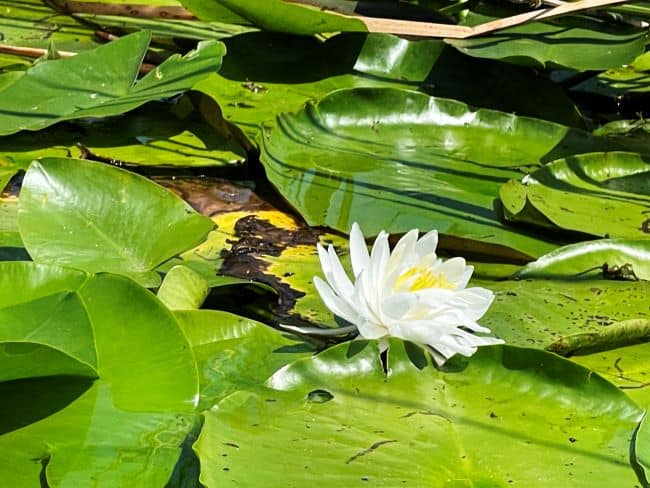
Must Do’s in Indiana Dunes National Park
The Bailly Homestead and Chellburg Farm are must-visit destinations. Bailly was a French Canadian fur trapper who settled in the area in the 1800s to trade furs with local indigenous people. He built the log cabin and other structures now on display. The Chellburgs purchased the acreage for their farm from Bailly in 1869. Today, the Chellburg Farm remains an active working farm with livestock. A 2.1-mile loop hiking trail takes visitors to the Little Calumet River and the Bailly Family cemetery.

You can tour five landmark homes in the park’s Century of Progress Historic District. The 1933 World’s Fair in Chicago, known as the Century of Progress, built these homes and billed them as the homes of the future. Although we only got to see the outside of the homes, it was interesting to learn the history of each building. The collection includes the Cypress Log Cabin, the Wieboldt-Rostone House, the Armco-Ferro House, the House of Tomorrow, and the Florida Tropical House.

Our favorite Memory A Fireside Chat
The evenings at the Portage Lakefront and Riverwalk pavilion are absolutely breathtaking. During the summer, every Wednesday from 7:30 to 8:30 p.m., there’s a ranger-led fireside chat you can join. The fact that guests could bring marshmallows to roast over the fire thrilled us. Thanks to some friendly folks on the chat, we got to enjoy s’mores with our new pals while the ranger shared some hilarious stories. As we watched the sunset behind the Chicago skyline, we realized that no picture could ever do justice to the beauty of this spot.
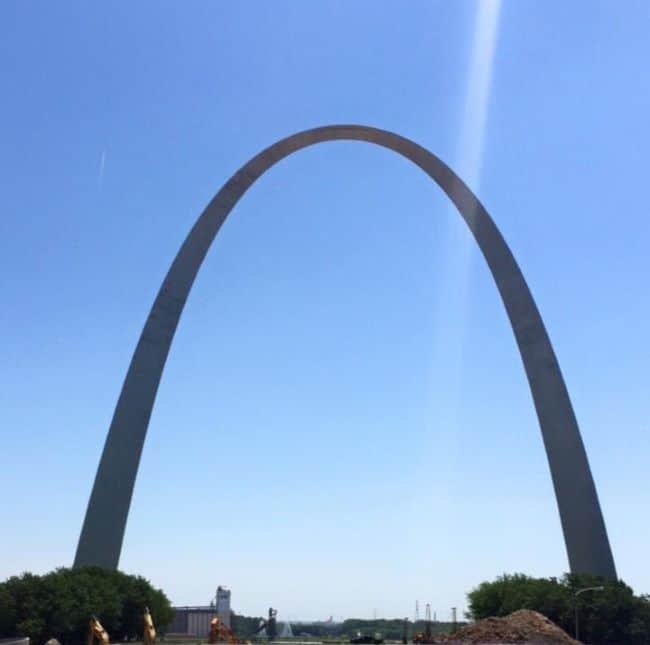
Gateway Arch National Park: A Midwest Landmark to Explore
Overview: This iconic St. Louis landmark isn’t just a monument; it’s a gateway to American history. In the Western Hemisphere, this is the tallest monument created by humans. The sleek stainless steel arch stands as a testament to America’s pioneering spirit. To commemorate the westward expansion of the United States, renowned architect Eero Saarinen designed and constructed the Gateway Arch between 1963 and 1965.

Best things to Do: Whether you’re a history buff, a thrill-seeker, or simply looking for a unique experience, Gateway Arch National Park has something for everyone. Start by exploring the fascinating museum at the Gateway Arch. Here we discovered the stories of pioneers, explorers, and dreamers who shaped our nation. No trip to the arch is complete without taking a thrilling tram ride to the top. Climbing to the observation deck, we were rewarded with sweeping panoramic views of the Mississippi River and the city skyline. On a clear, sunny day, it’s also a treat to take a leisurely stroll along the scenic riverfront.

Our favorite Memory: It is truly an engineering marvel. Standing directly underneath the 630-foot tall majestic Gateway Arch fills you with wonder and awe. The sheer scale of the structure is mind-boggling. It’s as if you’re standing at the base of a colossal. You feel small and insignificant. The way the arch curves upward, reaching for the sky, is simply breathtaking.

Mammoth Cave National Park: A Natural Treasure Beyond the Caves
Overview: A visit to this national treasure offers unique adventures like cave tours, hiking trails, and wildlife watching. Mammoth Cave is the world’s longest known cave system. You can discover the magic beneath the surface. There are hundreds of miles of winding passages and multiple tours to explore these stunning cave formations. Whether you’re an avid spelunker or just looking for a natural escape, this park will surely surprise you.
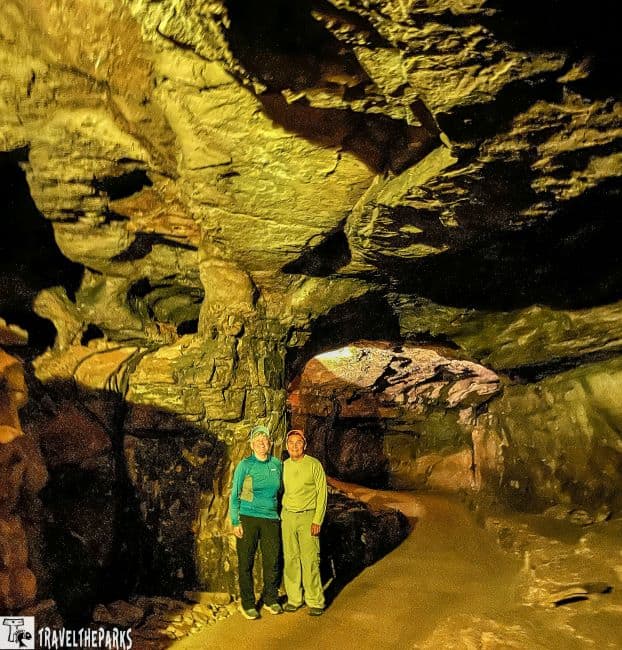
Best Things to Do in Mammoth Cave National Park
When visiting this incredible natural wonder, there are a wealth of captivating activities to experience both above and below ground. At Mammoth Cave National Park, a cave tour is undoubtedly a must-do bucket list item. The historic tour we did delves into the cave’s rich history and geology. While exploring the labyrinth of tunnels is the highlight, there is a wealth of topside outdoor recreational activities that are equally enticing. Winding through shaded woodlands are miles of well-maintained hiking trails. As cycling enthusiasts, we rode on the park’s network of scenic biking paths.

Our favorite Memory kayaking the Green River
Cave tours have always been a blast for us, with amazing memories from places like Carlsbad Caverns, Wind Cave, and Jewel Cave. But honestly, nature has so many incredible surprises that leave me in awe. One of the most enchanting moments was kayaking on the peaceful Green River. There’s something truly special about gliding over its still waters, especially during the fall. As we drift along, the colorful autumn leaves dance on the river’s glassy surface. It’s such a stunning sight. Seeing deer and other wildlife come to drink at the riverbank fills me with a sense of wonder that I hope sticks with me forever.

A gypsum flower found in Mammoth Cave Credit: R. Crouse
What Essentials to Bring on a Midwest National Park Road Trip
For a Midwest national parks road trip, bring comfortable walking shoes, breathable layers for changing weather, a light jacket, sunscreen, insect repellent, and plenty of water. Pack a small daypack, snacks, a cooler for longer drives, and a first-aid kit. A paper map or downloaded offline maps are useful where service is limited, along with a portable charger and car mount for navigation. Include essentials like sunglasses, a wide-brimmed hat, toiletries, and any needed medications, plus camp chairs or a blanket for picnic areas. If you’ll be hiking or exploring deeper, add trekking poles, a headlamp, and extra socks; in cooler months, bring warm layers and gloves.
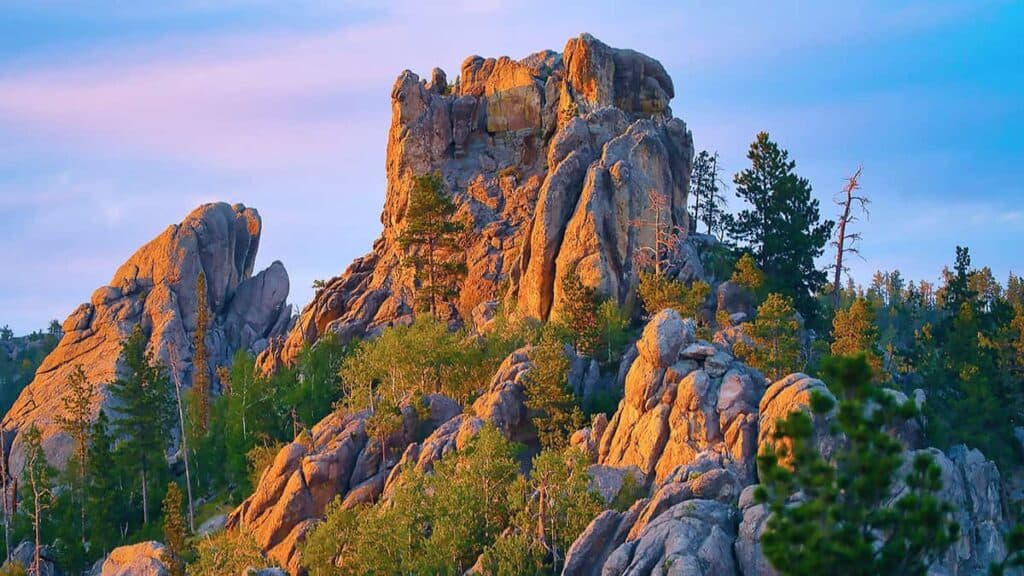
Final Thoughts: Uncovering the Best Midwest National Park Treasures
The national parks of the Midwest offer a perfect escape from the stresses of daily life. Often overlooked, they fly under the radar, yet they are true hidden gems — the crown jewels of the region. Each park has its own way of reconnecting visitors with nature and the great outdoors. On your next road trip, uncover the untamed beauty at the heart of America by exploring one — or all — of these remarkable Midwest national parks.
Have you explored any of the Midwest’s national parks? Share your favorite memories and recommendations in the comments below.

